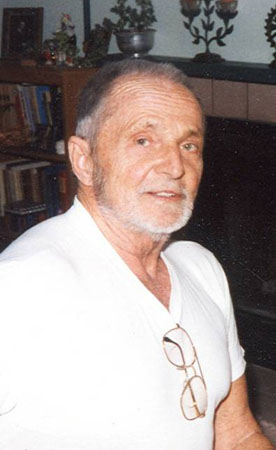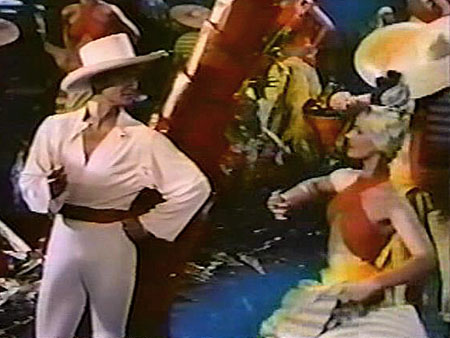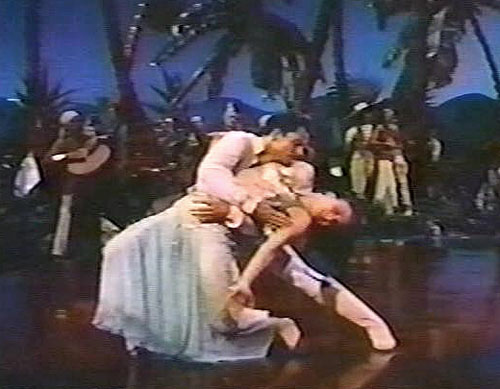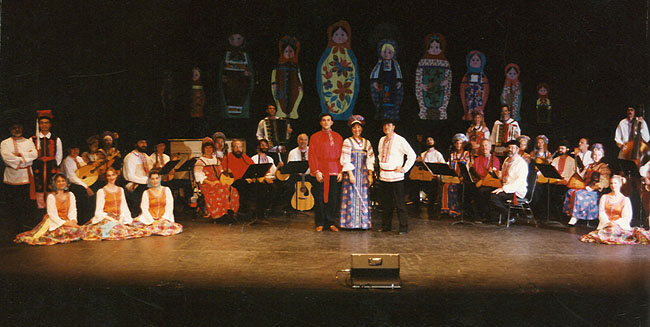CHAPTER 24Tucson Becomes My New Home.
The summer heat, unbearable to most, didn’t bother me in the least. I went for long hikes in the mountains and canyons and on the hottest days, often lying prostrate on a rock in full submission to the blazing sun like a sacrificial victim. Birds hovered over and critters gathered around me in disbelief.
Sonya Winter brought one day of snow, well, actually it was only a
morning’s worth before it all quickly melted away. Snow, no matter
how scarce, is most unusual for the desert. So rare, I had to take a
picture of it. Photo left: Sonya, the cover girl
London
Other than visiting these places there was nothing much to do in Stevenage. Walks, pubs, reading. Charles had retired from the banking business to this town yet I never knew why he moved away from all the attractions of London life. So, after a week or two it was time to leave the severe Winter of England and return to the warmth of Arizona. Photo: Stevenage Muscovy Duck in Stevenage, New Town park
Arizona Balalaika Orchestra (
website with
videos and pictures ) Just after returning to Tucson, someone told me there was a local Russian balalaika orchestra performing at a Tucson High School, as part of a dancing school performance. A balalaika orchestra in the middle of the desert? This I had to see. Would Tucson audiences have even heard of Russian folk instruments like the Balalaika? Elizabeth Shaw took me to the performance at the same High School where, twenty years earlier, I had directed the Opera “Pagliacci” and premiered my “Round-Up” and “Brooms Of Mexico”. The dance performance; a typical low quality recital, but I wasn’t there to see that. Afterwards, I went backstage to meet the orchestra’s conductor, Mia Bulgarin Gay. After expressing my love of Russian folk music and dancing, plus the language, I mentioned that what the orchestra really needed was a dance group to go with it to perform authentic Slavic dances. I could easily supply that. Then I joined the orchestra as a balalaika player myself; an occupation that was to continue for many years to come.
Photo above: First set of Kalinka dancers in class Photo right: I join Balalaika Orchestra. In garden on Shaw property where my first Tucson house is located
Ballet Arts Studio Before long I was teaching ballet and character classes there and around town. There was also an occasional character class to teach at the University, So, my decision not to be involved in dance ever again had obviously run amok. More Choreography and Beginnings Of The
Kalinka Russian Dancers My life had come full circle. I had started out at age fourteen as a Russian folk dancer with the Russakoff troupe and now, after a career on the professional stage, I was back doing the same thing I’d started out with.
It also wasn’t short on animals. Two live
camels were led across the stage in the triumphal scene; a sight
that delighted the audience but caused me to hold my breath that
they didn’t leave anything behind that the dancers might slip and
fall on!
The Arizona Opera director, Glynn Ross, then in his 90s, came to Tucson after directing the opera company in Seattle and had put both companies on the global stage with a complete Wagner’s “Ring” cycle. A cruel joke going around among the orchestra and chorus members was that he looked and acted as if he was daily taken out of a cryonic chamber! Probably unaware that he was being
discourteous, he never thought to introduce me to the stream of
conductors that I had to work with. While they would look on in
amazement at his bad manners, I had to introduce myself. As often
the case with haughty and self-important individuals in opera as
well as ballet companies, they consider the choreologist or
choreographer not important enough to introduce. It’s true that In
opera, dancers and choreographers are never given much consideration
but this breach of etiquette would never have happened at the
Metropolitan Opera.
Photo: Die Fledermaus
It always amazed me how stage directors, musicians, even conductors know so little about dance. More often they know nothing at all about it while dancers and choreographers know music as essential. Well, not always. I know several ballet teachers and so-called choreographers who simply don’t have a clue about music.
Photo: Backstage picture of some of my gypsy dancers in "La Traviata". Left to right: Jennifer Wood Bonnell, Sabina Valic Burke, [unknown chorus singer], Jenni Hynum, Kathleen Schwartzman
Once, when I was to choreograph a “Cinderella” somewhere in Pennsylvania, I arrived for the first rehearsal to find the director had already choreographed most of the first act, including the four ‘seasons’ variations as one continuous corps de ballet number. She hadn’t a clue that they were individual variations, indispensable to the ballet. She just put on a recording of the music and plowed through without preparation or concept. I doubt if she even bothered to find out who the composer was. Every choreographer should at least be able to
read an orchestral score but I guess that’s a thing of the past. At the first rehearsal when it came to a needed dancing sequence the director graciously indicated I was to take over. Surprise! I was suddenly not a consultant at all but in fact, the choreographer. He was a nice enough man, but this was the job he himself was supposed be doing. It could have really thrown me for a loop if I had not had enough sense to prepare all the stage business and operatic dancing beforehand. Taking up the gauntlet, I was able to step in and do it effortlessly. He was obviously more than relieved to have a Johnny-on-the-spot but I could sense the reason behind it. Apparently, this director knew nothing about choreography or even how to stage some sham dancing. Rather than admit this to the company, he requested a ‘consultant’, basically to cover for him. In so doing they could get away with paying me far less than they would for a choreographer. It was not a complete waste for me as the lesson came in valuable use with the film work that was yet to come. The Tucson Weekly “The Tucson Weekly” featured journalism with an edge. It had built a readership of over 200,000 with insightful, cultural coverage, provocative analyses of local politics and offbeat feature writing. They were looking for a dance reviewer. I put together a portfolio of the best articles I had written for New York magazines and presented myself for the job. My first review was about the Bill T. Jones performance. Tucson was just another stop on their tour. Admittedly, it was difficult not to win out on this one. My first paragraph was: “Some 50 or so dancers stood naked before us on the stage at Centennial Hall last night. Bill T. Jones/Arnie Zane & Co. were joined by 42 local Tucson dancers to make up this army of innocents. Their open expressions showed dignity, purpose and togetherness”. That was enough to grab attention. I weighed
in with a full-page write-up. Bill T. Jones was Black, admittedly
homosexual and he was HIV. The entire show was based on these
subjects. “Last Supper at Uncle Tom’s Cabin/The Promised Land’ was a
sprawling work of operatic length. The 42 local dancers were of all
ages, and most didn’t have the sleek look of dancers, especially to
be seen stark naked in front of thousands, several of them my
friends. At the same time BBC was filming the show for broadcast on PBS. Everything connected with it was big news. I had a winner. The “Weekly” staff was impressed and from then on every week I had to write a dance review. Along with the press passes and increased
stature in the dance community as the “new guy in town who really
understands dance”, this was an exciting, full-time job. That is,
when I was writing about a professional company. When none were in
sight I had to write about the local, amateur groups; started for
the most part by persons with very little dance training but all the
same considered themselves choreographers. Perhaps they had a dance
major degree from College or had the brilliant idea to put street
kids on trapezes and call it dancing. More often than not there was
just very little I could say about these performances of faux
choreography. Even if I interviewed them on a personal level, their
lives were hardly interesting enough to write about. I wracked my
brain trying to come up with something that might have some drawing
power. There were just not enough professional groups coming through
to keep my interest up. After a year or so I left the “Weekly” but
continued to write occasional dance reviews for the other
established Tucson papers but only when it was something worth
writing about. A New House
Photos above: My Tucson house from 1989 to the present George Zoritch
Photos below: Images from the movie showing George Zoritch (See Addendum below.)
Through George I met Vassili Sulich who ran the Nevada Dance Theater in Las Vegas. Vassili had been a top dancer for many years in the Tropicana Hotel stage shows. He was well known in Las Vegas. One evening we were being entertained as his guests at a special dinner party in the Tropicana. Sitting at a table with ten other people in a private dining room I was the only vegetarian and felt left out! Usually, vegetarians have to wait until last to be served. Feeling ostracized, you are left to watch everyone else eat while waiting for yours that never seems to come. Being a vegetarian on a plane is another
problem. If you’ve ever tasted a cold burrito you’d think twice
about accepting any plane food, vegetarian or otherwise.
Addendum I took it upon myself to arrange a memorial event held in the studio at the University where he had taught for 14 years. People came from near and far. The scene from the movie “Escape Me Never” that originally inspired me at age 14 to become a dancer myself was projected on a large screen. Letters of condolence from many of the ballet world in Russia and the USA were read. It was a sad yet powerful event. |
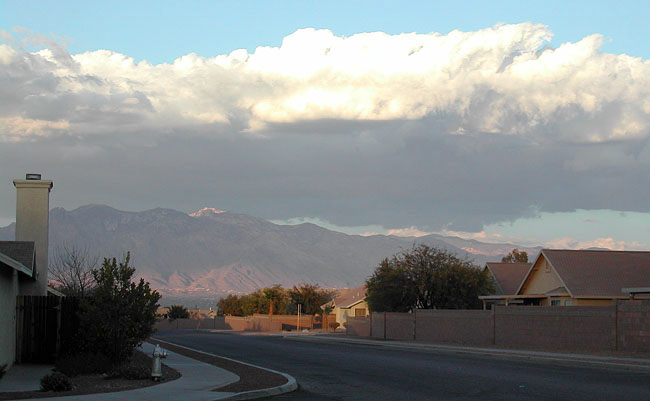


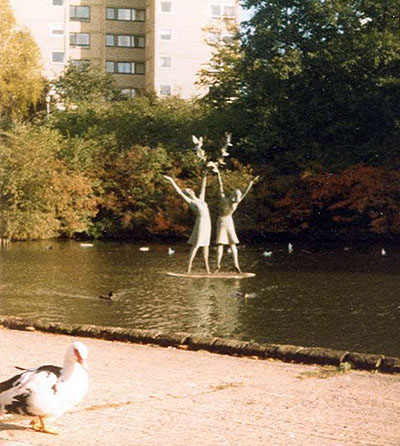 Nearby
Stevenage is Hatfield House where Elizabeth the First was residing
when she became Queen and the home of Lord Bulwer-Lytton, the
English novelist, playwright and politician and the author of “Last
Days Of Pompeii”. E.M Forester, who wrote “A Passage To India”, “A
Room With A View” and many others which were made into remarkable
films by Merchant-Ivory, lived in Stevenage.
Nearby
Stevenage is Hatfield House where Elizabeth the First was residing
when she became Queen and the home of Lord Bulwer-Lytton, the
English novelist, playwright and politician and the author of “Last
Days Of Pompeii”. E.M Forester, who wrote “A Passage To India”, “A
Room With A View” and many others which were made into remarkable
films by Merchant-Ivory, lived in Stevenage. 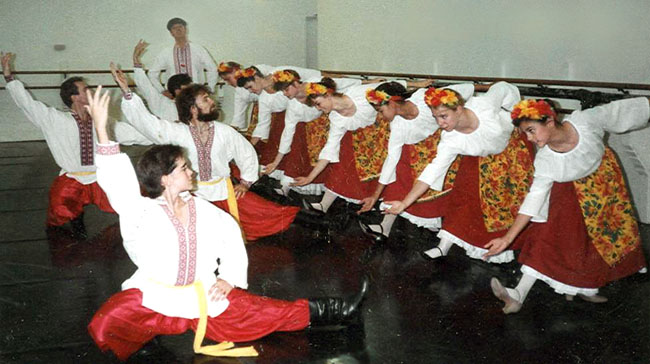
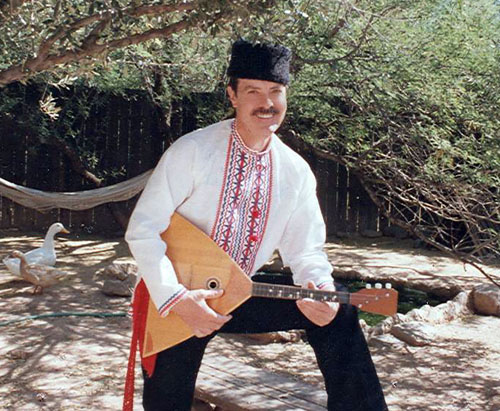
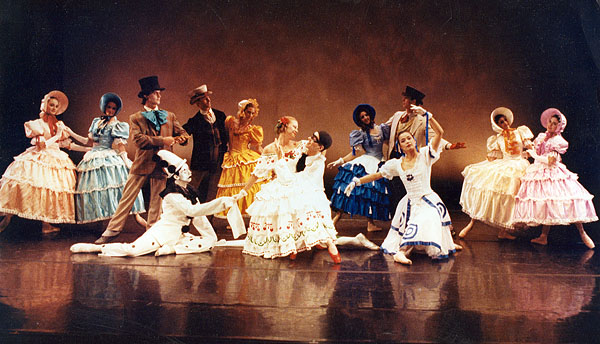

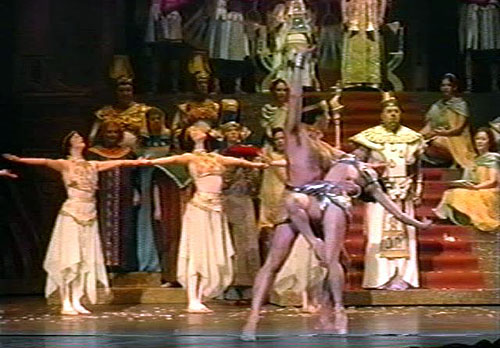 The
reviews were good for this “Aida”:
The
reviews were good for this “Aida”: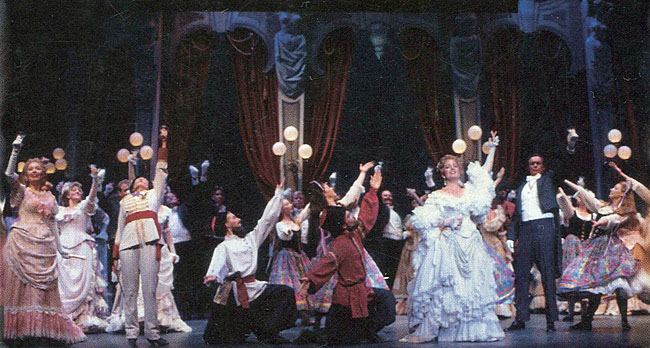 Then
came “Die Fledermaus” and “La Traviata”. When Glynn Ross finally
retired, the new director didn’t use dancing at all, even for a
revival of “Aida” ten years later. Imagine, “Aida” without a ballet.
It was inconceivable.
Then
came “Die Fledermaus” and “La Traviata”. When Glynn Ross finally
retired, the new director didn’t use dancing at all, even for a
revival of “Aida” ten years later. Imagine, “Aida” without a ballet.
It was inconceivable.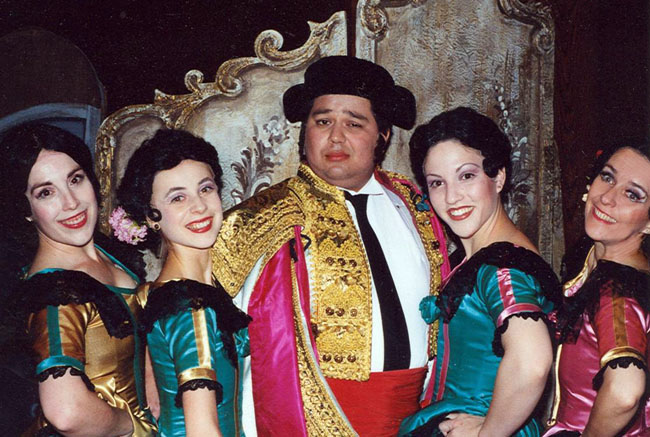


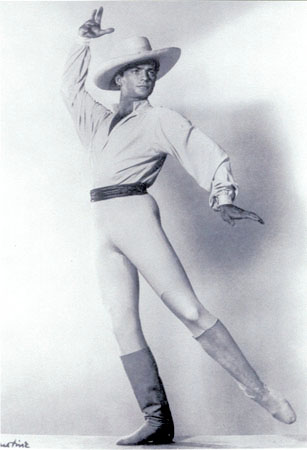 age
usher there. I could never have guessed then that he would somewhere
in the future be a friend and neighbor of mine. Then in his 70s, he
had retired after teaching at the University of Arizona. He took
care of Sonya in his house during my many trips out of town. I
helped him write his memoirs and it was good practice speaking with
him in the Russian language.
age
usher there. I could never have guessed then that he would somewhere
in the future be a friend and neighbor of mine. Then in his 70s, he
had retired after teaching at the University of Arizona. He took
care of Sonya in his house during my many trips out of town. I
helped him write his memoirs and it was good practice speaking with
him in the Russian language. 